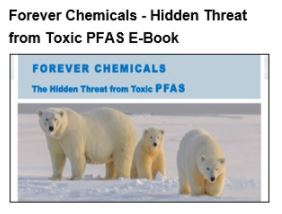Endocrine Society and IPEN publish guide on endocrine disrupters
As the global population continues to grow, the demand for goods and resources puts a lot of pressure on the companies that provide them. This has led to the increased use of various chemical compounds, all of which aid mass production and manufacturing of items ranging from cars to batteries. Even agriculture resorts to using various chemicals, including fertilizers and pesticides, for the purpose of maximizing the yield of food crops.
However, the more chemicals that companies use, the more pollution is likely to enter the environment, both as waste during the end of a product's lifecycle and as inefficiently used excess during the production phase. A central concern for scientists is how these chemicals impact human health, and over the years, a vast body of research has shown that various compounds act as endocrine disrupters in the body.
Researchers continue to expand their knowledge on the topic. During Dec. 15 to Dec. 17, 2014, international teams of scientists who study subjects ranging from human biology to environmental health are scheduled to gather in Geneva to discuss the progress of the Strategic Approach to International Chemicals Management. In the weeks leading up to the event, various global health and research bodies, including the Endocrine Society and IPEN, collaborated to compile a guide titled Introduction to Endocrine Disrupting Chemicals, which is intended to guide policymakers.
What are endocrine disrupters?
The endocrine system includes all glands, including the thyroid, adrenals, pancreas, pituitary, testes and ovaries. Every gland releases hormones, which are chemical messengers that stimulate different functions throughout the body.
According to the Natural Resources Defense Council, endocrine disrupters are substances that, when inside the body, either block or mimic the behaviuor of hormones. Studies on animals show that chemical endocrine disrupters, such as polychlorinated biphenyls, can negatively impact the reproductive systems of fish, birds and other creatures. Endocrine disrupters can also hurt humans, who may be exposed to them through air or water pollution. Various foods may also be contaminated with endocrine disrupters because of the chemicals used in the packaging, which can leach out into the food.
The Environmental Working Group has a partial list of various endocrine disrupters, as well as their effects on human health. These include:
Phthalates, which may increase the likelihood of diabetes and hurt the male reproductive system.
Polybrominated diphenyl ethers, which are flame retardants that can imitate the behaviour of thyroid hormones.
Lead, which is a heavy metal that can seriously harm the nervous system.
Mercury, which is a common contaminant in seafood and can harm the development of the fetal brain.
Organophosphate pesticides, which are a widely-used class of pesticide that may harm neurological health and fertility.
Comprehensive guide may inform decisions
Before meeting to discuss the Strategic Approach to International Chemicals Management, the Endocrine Society and IPEN published the Introduction to Endocrine Disrupting Chemicals, which includes information on how EDCs have been tied to male reproductive problems, early female puberty, cancer and neurobehavioral abnormalities. Ideally, this guide will educate international policymakers, according to the authors.
"In Geneva next week, the international community will decide how to respond to regional recommendations and growing stakeholder concerns about EDCs. Some of our goals for the meeting include new initiatives to identify potential EDCs and safer alternatives including non-chemical alternatives, more awareness-raising about the hazards of EDCs, and steps toward translating research results into control actions," Olga Speranskaya, Ph.D. and IPEN co-chair, said in a statement.
The NRDC has several tips to help consumers minimize their risk of exposure to EDCs. These include the purchase of organic food, and avoidance of food items packaged in plastic containers.
CONTACT US
Tel: +44 (0) 151 649 4000
Email: marketing@greyhoundchrom.com
FOLLOW US
YOU MAY ALSO BE INTERESTED IN OUR NEWSLETTER














